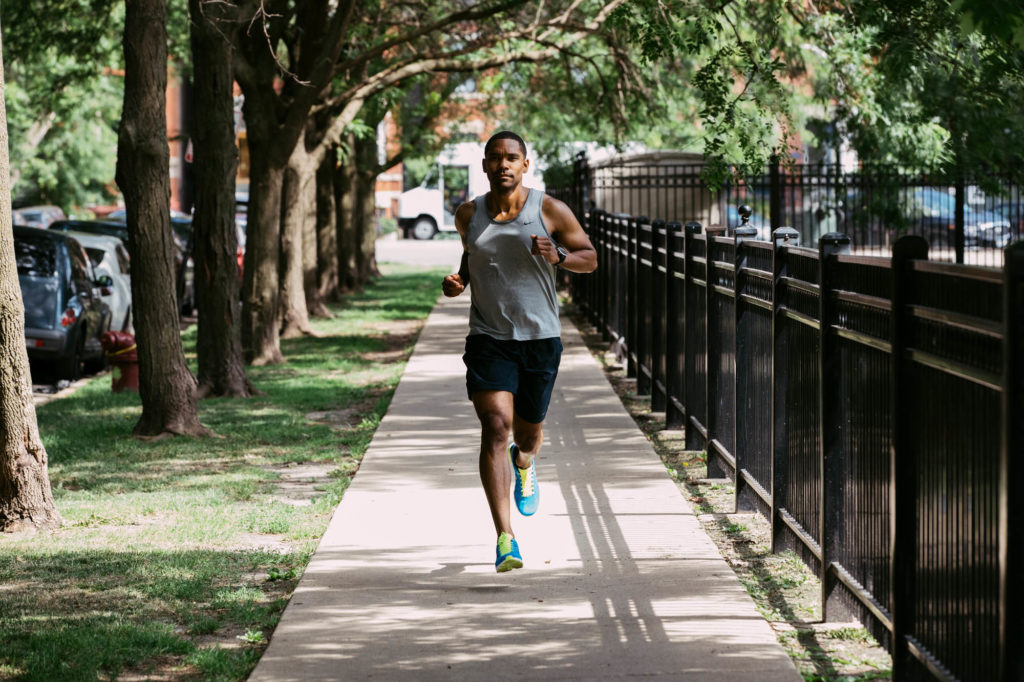Like the Wind x Strava Partnership
According to Heraclitus, the Ancient Greek philosopher “No man ever steps in the same river twice, for it’s not the same river and he’s not the same man.” And perhaps this is part of the attraction of running the same loops or the same sections of our local roads and trails. The seasons change. The weather changes. We change. And it is through those changes – on the same routes – that we experience challenge, growth and the simplicity of running.
There is clearly something addictive about running the same Segments. Gareth Nettleton, VP Marketing at Strava, says that there are currently 19 million Segments on Strava. A Segment, Nettleton explains, is any section of road or trail that any athlete has identified and on which they have set a time. Now, whenever any runner covers the same Segment, their time is recorded and put on a leaderboard. With around 40 million activities uploaded to Strava every day during 2020, this means many Segments have dozens, or even hundreds, of times logged on them.
Indeed, Segments are becoming more and more important for runners. During the past year, the amount of Segments created has skyrocketed. In particular in the United Kingdom, Brazil and Germany, the number of Segments doubled in 2020.
So what is the attraction? Why are runners (and other Strava athletes) creating Segments?
George Adame is a Texan runner who decided to create a Strava Segment from one of the routes he regularly runs. The name of the route came from a very specific sight that he encounters. “Feral hogs in Texas are known to be the unseen beasts of destruction. You never see them, but the damage they create is evident at sunrise and it’s remarkable,” explains Adame. “A beautiful meadow will suddenly appear to be freshly ploughed. Vegetation, plants, flower beds, vegetable gardens, crops and smooth rolling grassy areas become what you can imagine as a field with hundreds of detonated mines. Holes everywhere. Overturned topsoil and plants lay on their side to dry and die.”
For Adame, the amount of nocturnal damage the hogs do is remarkable… and can create some challenging conditions underfoot for running. One day on one of his regular runs, Adame found one of the feral hogs on the side of the road, apparently killed following a collision with a vehicle. “It was quite intimidating with its tusks protruding and glaring stare,” he says.
“Even in death, this beast seemed to lie there, proud of what he had done overnight.”
Adame was looking for a way to measure his performance as a runner, so he created a Strava Route for his daily 10km run and within that set a Strava Segment. Adame named it in honour of the beasts that shared the space with him – Hogzilla. Adame’s segment is 5.76 miles with 105ft of elevation. And he has been able to see his performances improve over time on the same route. “The more I run the Hogzilla Segment,” says Adame, “the more opportunities I have to reflect on why how I have conquered the beast.”
“What I used to fear and dread is now something I’m quite proud of, and my Strava Segment is a one of the reasons.”
In the UK, Covid-19 laid waste to athlete Kevin McQuaid’s plans for 2020. But he found that one particular segment in the English capital provided a worthwhile challenge. “Lockdown last year saw me training for various marathons, including Boston and Chicago, which got cancelled,” explains Kevin. “As each one got cancelled, I begun to get curious as to how fast I was able to run.”
Regent’s Park, in central London, and the streets around it, were designed by John Nash and Decimus Burton during the 1800s. Their plan included two circular roads, the Outer Circle being almost exactly 5km. It was the Segment on this loop on which Kevin set his sights.
“I teach round the corner,” Kevin says, “and week after week of running the loop I had built up confidence. One day in June I ran a time that was far faster than I had imagined and I discovered I had become the fastest person in my age group. The feeling of achievement, pride, and happiness was wonderful. And every time I head off round the loop I now can feel, remember, and look back fondly on that balmy Saturday morning.”
Another athlete – Portland-based Liz Anjos – also discovered that Segments are a great alternative to races cancelled due to the Covid-19 pandemic.
“After a year of zero racing, I found myself itching for a challenge,” Anjos says. “Just a few miles from my home is Saltzman Road, technically a trail, that has one of the stronger Segment leaderboards in Portland. The route starts at the bottom gate of the trail, then climbs around 800ft over 2.6 miles to the gate at the top. While it’s not the steepest hill around, the climb is unrelenting.”

Anjos explains that she had completed countless hill workouts on Saltzman last winter, so it felt fitting to see how fast she could cover the Segment from the bottom to the top. She set herself a couple of challenges: a personal best and a spot in the top 10 on the leaderboard. And for Anjos, the experience was similar to a race.
“I experienced all the same race day nerves and flutters,” she says, “even though it was just me when I set off. As I huffed and puffed up the hill, I thought of one of my favourite quotes by the runner Julia Chase –
“Running puts you in touch with your primal self and your deepest resolve. You learn how to deal with pain and other obstacles. You realise that it’s not important to do conventional things. You can do whatever feels worthwhile to you.”
“Ultimately, in the grand scheme of the universe, my run up Saltzman was not a big deal to anyone but me,” Anjos continues. “As my breathing became frantic and my legs began to relent, I thought, ‘Why am I trying so hard?’ Despite my brain willing my legs to stop, my inner response to myself was, ‘Because it matters to me!’”
For Anjos, setting herself a target on the hill created a sense of control that had been missing throughout the pandemic.
“As a musician writes or an artist paints,” explains Anjos, “in a way that run felt like an outlet for everything I’d been feeling, all in one burst up that hill. Organised races serve as a wonderful vessel for athletes to test themselves, but aren’t the end-all in satiating our human desires in seeking our physical limits. That’s something I took away from Saltzman that day.”
It’s easy to see why Strava athletes use Segments for personal development, competition or simply getting outside – the route might be the same, but what you will experience will undoubtedly change. And so will you.
I N P A R T N E R S H I P W I T H
Experience the best of Strava for free with a Like the Wind 30-day trial




